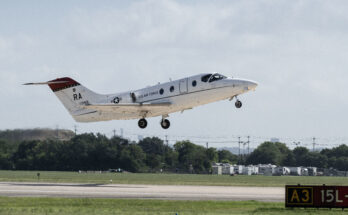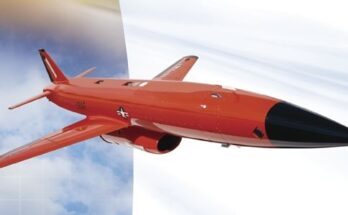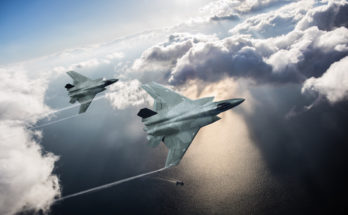
Earlier this month, Ocius Technology delivered the fifth and final Bluebottle uncrewed surface vessel (USV) ordered by the Royal Australian Navy (RAN).
Ocius, a public unlisted company working out of the University of New South Wales, delivered the first two Bluebottles in March 2023 under a contract with the RAN that was signed on November 24, 2022. Ocius has been operating under the Australian Department of Defense’s Defense Innovation Hub. The Innovation Hub was established in 2016 and has given AUD1 billion ($737 million) for investment in Australian defense technology up to 2030.
The Bluebottle (the Australian term for a Portuguese man o’ war jellyfish) began as a project intended to meet the U.S. Navy’s 2007 requirement for a “platform that could go to sea forever.”
Drawing on its expertise in hybrid surface vessels, the 23-foot (7-m) Bluebottle is powered by a hard sail covered in solar panels; a rudder-flipper that generates additional thrust from the vessel’s pitching at sea; and an electric engine-driven propeller.
Based on sea trials completed in November 2022, the Australian Navy estimated that the Bluebottle could surveil 2,120 square miles (5,500 sq km) in a single patrol. The USV can carry a 660-pound (300-kg) payload and travel at 5 knots with 50 W of power on an average payload, and can be launched from boat ramps or ships.
At the Bluebottle’s induction ceremony, RAN Commodore Darron Kavanagh outlined the new USV’s likely mission set: “At the moment, we’ve been very fixated on maritime and fisheries protection. But also, we’ve been doing work on undersea surveillance as well … We see an opportunity with this sort of platform because of how quiet it is; it makes a perfect platform for listening undersea. Also, in the future, we see it being a potential platform for being able to be used in more things like detecting submarines.”
The Bluebottle is the Australian Navy’s first reported USV and will join other uncrewed systems that include the ScanEagle and Camcopter S-100 uncrewed aerial vehicles (UAVs) and the Double Eagle Mk II uncrewed underwater vehicle.
The UAVs are primarily designed for surveillance missions, while the Double Eagle is a minehunting submersible, operated by fiber-optic tether.
Australia is continuing its USV program with the acquisition of the Saildrone Surveyor. California-based Saildrone and Austal in Western Australia signed a teaming agreement for the project on April 14.
The 65-foot (20-m) surveillance USV would be produced at Austal’s facilities in Perth. The Saildrone Surveyor is expected to perform surveillance missions in the Indo-Pacific.
For the moment, the RAN is focused on surveillance capabilities for its new USVs. With Australia having the one of the world’s largest exclusive economic zones, totaling 3.15 million square miles (8.15 million sq km), and limits on its crewed platforms, uncrewed platforms can help Canberra significantly enhance its maritime monitoring without breaking the bank.
This article was originally published on our sister site, Military Periscope, the world’s easiest-to-use, up-to-date, open-source military database covering weapon systems and armed forces from around the world.




